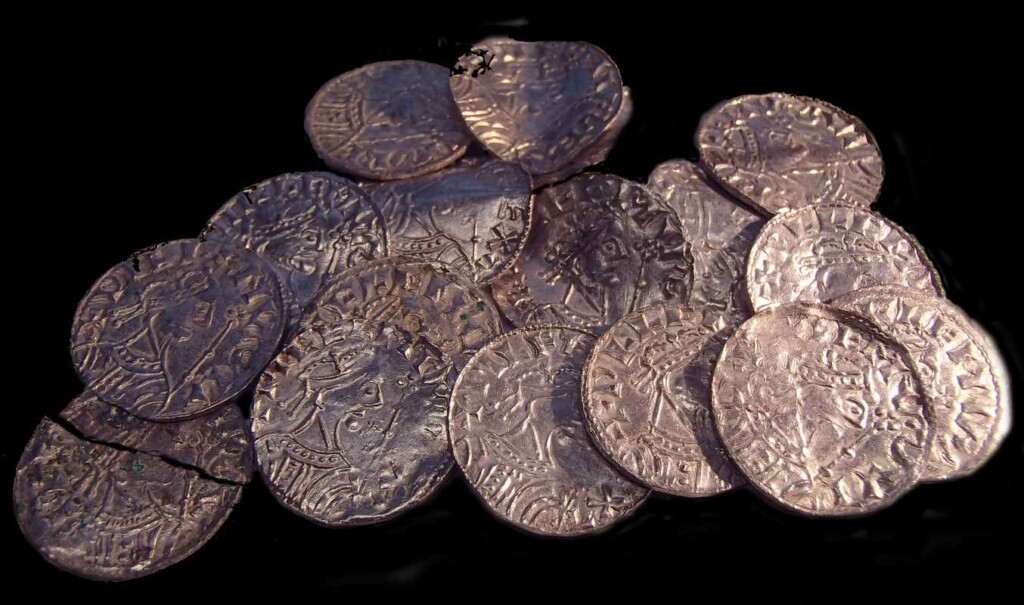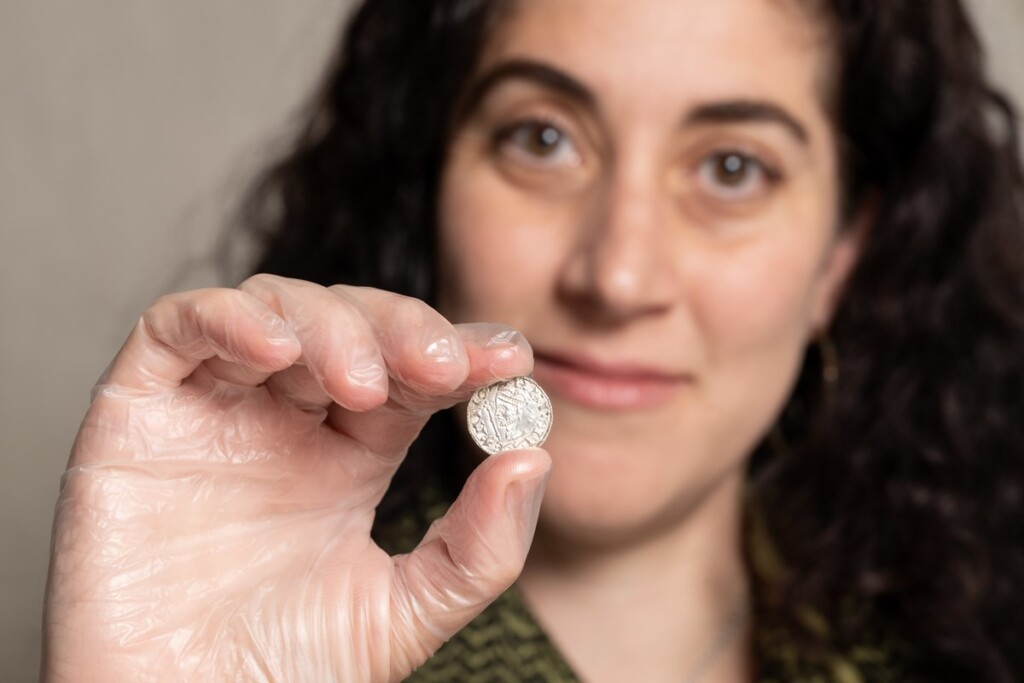 © British Museum: The Chew Valley Hoard of 2,584 silver pennies dates from the turmoil of the Norman Conquest of England and has been acquired by the South West Heritage Trust.
© British Museum: The Chew Valley Hoard of 2,584 silver pennies dates from the turmoil of the Norman Conquest of England and has been acquired by the South West Heritage Trust.The largest coin hoard ever found from the period of turmoil immediately following the Norman Conquest has been bought by the British government on behalf of the nation.
Consisting of 2,584 silver pennies, it was likely buried for safekeeping during a time when virtually the whole country was at war, and was recently valued at $5.6 million (£4.3 million) making it the highest value treasure acquisition on record, millions more than the gold and bejeweled Staffordshire Hoard that went on a world tour because of its fame.
 © British Museum: The Chew Valley Hoard was probably deposited for safekeeping during rebellions in the South West against the new Norman king, William ‘the Conqueror’.
© British Museum: The Chew Valley Hoard was probably deposited for safekeeping during rebellions in the South West against the new Norman king, William ‘the Conqueror’.It’s called the Chew Valley Hoard, and like many of the great coin and treasure hoards in English archaeological history, it was found by some locals with a metal detector in a farmer’s field.
Adam Staples was out with six of his friends in southwest England in 2019 when he found the first set of coins.
“The first one was a William the Conqueror coin—£1,000, £1,500 value,” Staples said Tuesday at the British Museum, where the hoard will go on display in November. “It’s a really good find. It’s a find-of-the-year sort of discovery. And then we got another one, (we thought) there might be five, there might be 10.”
1,066 CE: often cited as one of the most important dates in the history of the English-speaking world when the last traces of Vikingism and Saxon rule in Great Britain were eliminated by the Norman Duke William the Conquerer.
Landing near Exeter, William I from Northern France had to fight Harold Godwinson, the Anglo-Saxon King of England who had just destroyed the invading army of the Norwegian Viking ruler Harald Hardrotta and consolidated power in the country.
These two campaigns threw most of the country into turmoil, but Godwinson was defeated at the Battle of Hastings, and the Saxon traditions of kingship in the British Isles were replaced with a French-style monarchy that changed Britain’s destiny for centuries to come.
A little less than half of the coins were minted during Godwinson’s reign, while a little more than half depict the newly-crowned William I. These in particular are believed to be the very first coins minted during his reign—first editions, if you like.
“This remarkable hoard gives us unique insight into our country’s rich history and one of the most important moments in our history, when these islands were thrown into turmoil by the Norman Conquest,” said Sir Chris Bryant, the Minister for Heritage.
MORE HOARDS DUG UP RECENTLY:
The hoard contains twice as many coins of Harold II than have ever previously been found and increases nearly five times the number of known first-type coins of William I.
 SWHT Curator of Archaeology, Amal Khreisheh © South West Heritage Trust
SWHT Curator of Archaeology, Amal Khreisheh © South West Heritage TrustOnce Staples and his friends discovered the coins, the next step was to see if they would be declared “treasure,” a decision made according to the 1996 Treasure Act by a local government coroner. The Treasure Act holds that any objects of historical value to the nation made of precious or semi-precious materials are declared treasure, and held on behalf of the finder while museums make bids to purchase them for their collections.
Typically the value is judged by the market rate of the material, in this case silver, (going for about $33.40 an ounce at the time of writing) plus a premium for the historical value. In this case, the premium is substantial and more than 90% of the value of the artifacts.
The Chew Valley Hoard was bought by the Southwest Heritage Trust of England with a £4,420,527 grant from The National Lottery Heritage Fund and £150,000 from the Art Fund, alongside smaller but vital grants from other sources.
After a November debut at the British Museum, the hoard will return to Somerset where it was found, to join the collections at the Museum of Somerset in Taunton, 130 miles (210 kilometers) southwest of London.
SHARE This Historic National Treasure Found And Exhibited In Britain…
Source link

